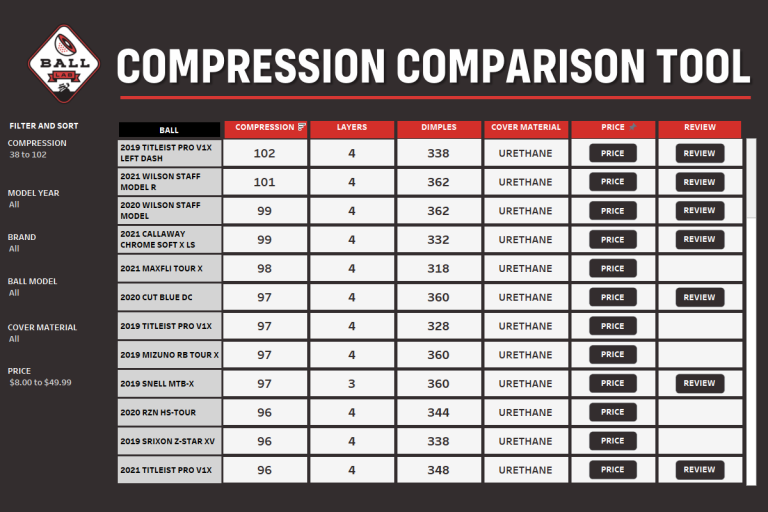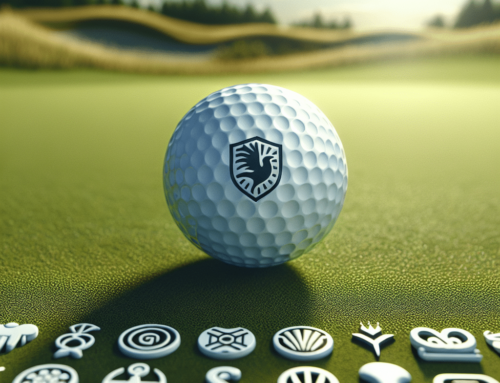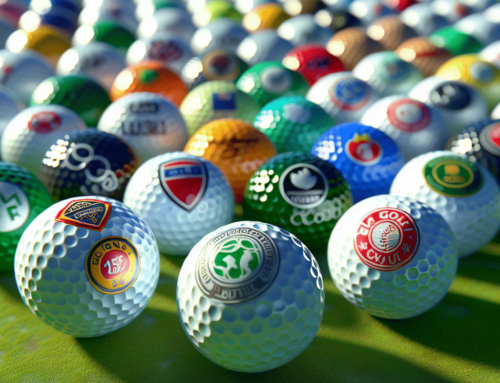What is golf ball compression?
Golf ball compression is a measure of how much a golf ball deforms when it is struck by a club. It is measured on a scale of 0 to 120, with lower numbers indicating softer balls and higher numbers indicating harder balls.
Why is golf ball compression important?
Golf ball compression affects a number of factors, including:
- Distance: Harder balls generally travel farther than softer balls. This is because harder balls have a higher initial velocity and retain their velocity better over distance.
- Spin: Softer balls generally spin more than harder balls. This is because softer balls deform more easily and grip the clubface better.
- Feel: Golfers often have personal preferences for the feel of a golf ball. Some golfers prefer the soft, mushy feel of a low-compression ball, while others prefer the firm, solid feel of a high-compression ball.
What are the different types of golf ball compression?
Golf balls are typically classified into three categories based on compression:
- Low-compression (60-80): Low-compression balls are the softest type of golf ball. They are ideal for golfers with slower swing speeds and those who want more spin on their shots.
- Medium-compression (80-100): Medium-compression balls are a good all-around option for golfers with a variety of swing speeds. They offer a good balance of distance, spin, and feel.
- High-compression (100+): High-compression balls are the hardest type of golf ball. They are ideal for golfers with faster swing speeds who want maximum distance.
How to choose the right golf ball compression for you
The best golf ball compression for you depends on a number of factors, including your swing speed, playing style, and personal preferences. Here are some general guidelines:
- Swing speed: Golfers with slower swing speeds should generally choose a lower-compression ball. Golfers with faster swing speeds can generally choose a higher-compression ball.
- Playing style: Golfers who want more spin on their shots should generally choose a softer ball. Golfers who want maximum distance should generally choose a harder ball.
- Personal preferences: Some golfers prefer the soft, mushy feel of a low-compression ball, while others prefer the firm, solid feel of a high-compression ball.
It is important to experiment with different golf ball compressions to find the one that best suits your game. You may want to try different brands and models of golf balls to see which ones feel and perform the best for you.
Other factors that affect golf ball compression
In addition to the core material, a number of other factors can affect golf ball compression, including:
- Cover material: The cover material of a golf ball can also affect its compression. Softer cover materials, such as ionomer and Surlyn, generally result in lower-compression balls. Harder cover materials, such as urethane, generally result in higher-compression balls.
- Cover thickness: The thickness of the cover material can also affect golf ball compression. Thicker covers generally result in higher-compression balls.
- Winding pattern: The winding pattern of the golf ball can also affect its compression. Tighter winding patterns generally result in higher-compression balls.
How to measure golf ball compression
Golf ball compression can be measured using a golf ball compression tester. These testers typically work by applying a known force to the golf ball and measuring how much it deforms. The compression rating is then calculated based on the amount of deformation.
How to choose the best golf ball for your swing speed
The best golf ball for your swing speed depends on the type of golfer you are. If you are a beginner or have a slower swing speed, you should choose a low-compression ball. This will help you generate more spin and distance. If you have a faster swing speed, you can choose a medium- or high-compression ball. This will help you maximize your distance.
Here is a table that shows the recommended golf ball compression for different swing speeds:
| Swing speed | Golf ball compression| Less than 90 mph | Low-compression (60-80) | | 90-105 mph | Medium-compression (80-100) | | More than 105 mph | High-compression (100+) |
Conclusion
Golf ball compression is an important factor to consider when choosing a golf ball. The right compression ball can help you improve your distance, spin, and feel. It is important to experiment with different golf ball compressions to find the one that best suits your game.







